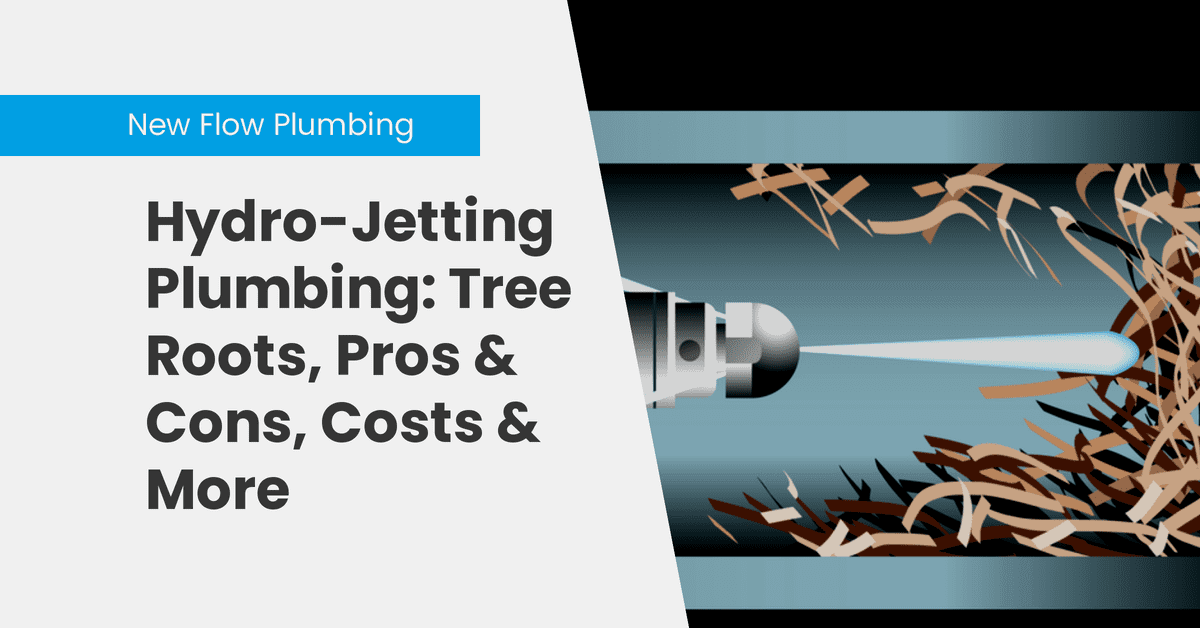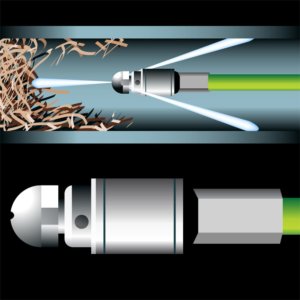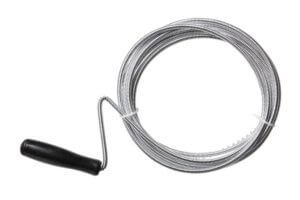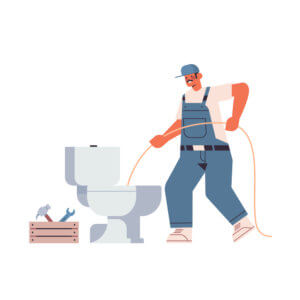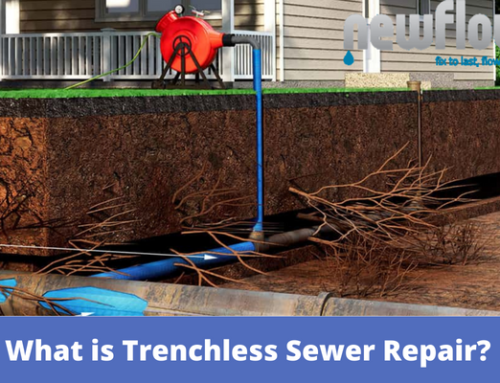Hydro-Jetting Plumbing: Tree Roots, Pros & Cons, Costs & More
Hydro-jetting plumbing pipes can sound fancy, but do you know what’s actually involved? In this article, we discuss hydro-jetting and how it works, how hydro-jetting tackles tree roots, how hydro-jetting compares to regular snaking, pros and cons of hydro-jetting, and its cost.
What is Hydro-Jetting, and how does it work?
Hydro-jetting is a safe, effective method of pipe cleaning. Hydro-jetting can clean out all of your sewer and plumbing lines, built to work with all sorts of pipes in or around your home. Plumbers use a CCTV sewer camera to find out where most blockages are coming from.
Hydro-jetting uses a self-propelled nozzle that shoots up to 4,000 PSI of water, blasting everything in its path. Your pipes are accessed using one a cleanouts, a section of pipe with a removable cap. The hose is connected to a tank of water and a machine that creates the pressure. Hydro-jetting utilizes different nozzles for different obstructions. Some are for tree roots, while others only clear away sludge.
Hydro-Jetting and Tree Roots
Hydro-jetting is an excellent tool for removing tree roots from your plumbing pipes. The water’s extreme pressure cuts tree roots out of the lines, breaking them down and shooting them out of the interior. After plumbers use a drain snake to break up roots that are too thick, hydro-jetting clears away the debris.
If you have old trees on your property, there may be a chance their roots are squirming their way toward your pipes. They are attracted to water, and the joints of your pipes are the perfect targets.
You might even notice one of your trees is greener or has grown much faster than others. They might have tapped into your sewer lines, taking advantage of the rich water supply.
Large roots can wrap around your pipes and crush them, while small roots will creep inside, multiply, and clog them. Old lines, made from thin material such as corrugated metal and PVC, and poorly assembled pipes are the most susceptible to invasive tree roots.
If your pipes are older and you notice signs of blockage, it’s time to call a professional.
Hydro-Jetting vs. Snaking for Drain Cleaning
Hydro jetting costs more than snaking, however, the advantage of hydro jetting is that it actually removes buildup while plumbing snakes only poke holes in blockages to get your drains flowing. Hydro-jetting can clear out all of your blockages in your drains and sewer lines. It’s the best solution when plunging or snaking doesn’t work.
Pros and Cons of Hydro-Jetting Your Plumbing
Pros
- Cleans everything – Hydro-jetting will blast away all grease, food debris, hair, minerals in the system, and tree roots from your drains.
- Environmentally-friendly – There are no chemicals involved at all, just pressurized water.
- Non-invasive – Hydro-jetting usually involves no digging. Most of the time, the jetter hose can be inserted directly through your existing cleanout.
- Speed – Hydro-jetting is fast and able to clear stubborn clogs in a jiffy.
- Maneuverability – The hose can navigate multiple bends or turns all sorts of plumbing pipes in or around your home.
- Exposure – Hydro-jetting exposes any cracks or holes in the pipe. CCTV inspections can miss these when the pipe isn’t clean. Sometimes a CCTV inspection doesn’t show the pipe state because it’s full of water (not draining correctly).
Cons
- Only for cleaning – Hydro-jetting is just for cleaning. It can’t repair a collapsed pipe. Click the link here to find out more about the benefits and costs of sewer repair.
- Too strong – Hydro-jetting is an excellent cleaning solution, but that’s a double-edged sword for older, fragile pipes. An experienced plumber will start the pressure much lower if the pipes are older to avoid damage if possible. Orangeburg pipes cannot be hydro-jetted due to their weak material.
- Cost – Hydro-jetting does cost more than regular snaking. However, in terms of effectiveness, nothing can beat it.
Read also: Trenchless sewer repair pros and cons
How Much Does Hydro-Jetting Cost?
Hydro-jetting can run anywhere from $300 to upwards of $600 for single-family homes., but it all depends on various factors including:
- What’s obstructing the pipe.
- Location of the pipe.
- Is it a residential or commercial job?
- Location of the obstruction. If it’s near a cleanout entrance, it will be easier to remove.
Regular snaking or rodding, a form of pipe cleaning using detachable 3-foot rods, can cost from $100 to $250. So Hydro-jetting does cost more, but it does a better job.
Hydro-jetting is not a DIY Project
A hydro-jetter is not something you can pick up at the store, so calling a licensed contractor is the only route. DIY methods in general are usually for small, isolated problems, and never truly solve major issues.
Who To Contact For Hydro Jetting
If you live in the greater Los Angeles area, check out New Flow Plumbing. A hydro-jetter is not something you can pick up at the store, so calling a licensed contractor is the only route. New Flow Plumbing has over 25 years of experience, including using hydro-jetting to clean and restore dirty plumbing pipes.
Don’t leave your plumbing clogged or backed up. Call New Flow Plumbing today to schedule your CCTV inspection and learn more about how hydro-jetting can clean your plumbing pipes.

